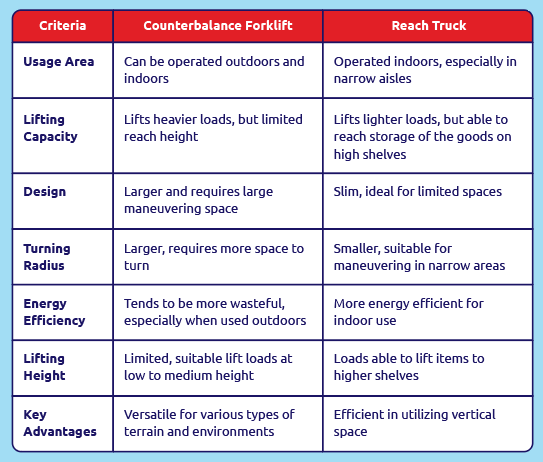Did You Know? - Types of Forklifts and Their Uses in Warehousing Activities

A forklift is a vital piece of equipment in the warehousing industry, used to lift, move, and lower heavy goods efficiently. By utilizing forklifts, businesses can significantly enhance their operational efficiency, reduce labor costs, and minimize the risk of workplace injuries.
Benefits of Utilizing Forklifts:
- Increased Efficiency. Forklifts significantly speed up the movement of goods within the warehouse, streamlining operations and improving overall productivity.
- Reduced Risk of Injury. Manual handling of heavy loads can lead to serious injuries. Forklifts minimize the risk of workplace injuries by automating the lifting and moving of heavy objects.
- Cost-Effectiveness. By optimizing material handling processes, forklifts contribute to reduced labor costs and increased operational efficiency.
Here are some of the most common types of forklifts used in warehousing operations and their key applications:
- Counterbalance Forklift. This is the most widely used type of forklift, characterized by its counterweight at the rear to maintain stability while lifting and moving loads. It's versatile and suitable for various applications in warehouses, industries, retail distribution centers, and more.
- Reach Truck. Designed for narrow aisles, reach trucks excel in warehouses with high shelves. They have a slim design and extendable forks that can reach and retrieve goods from high storage positions.

Companies can save operational costs, maintain efficiency, and improve the effectiveness of logistics and warehouse operations by selecting and using the right forklifts and following safety guidelines when operating forklifts.
Selecting and Using Forklifts Safely:
Choosing the right type of forklift for your specific needs is crucial. Factors such as warehouse layout, load weight, and frequency of use should be carefully considered. It is essential to prioritize safety when operating forklifts. Proper training, regular maintenance, and adherence to safety guidelines are paramount to prevent accidents.
Disclaimer:
This information is provided for general knowledge and informational purposes only. It does not constitute professional advice.
Hopefully, this information will help you manage and use forklifts safely and efficiently. If you need help or further information regarding insurance, please contact us at 021 - 2523110 and we will be happy to assist you.



